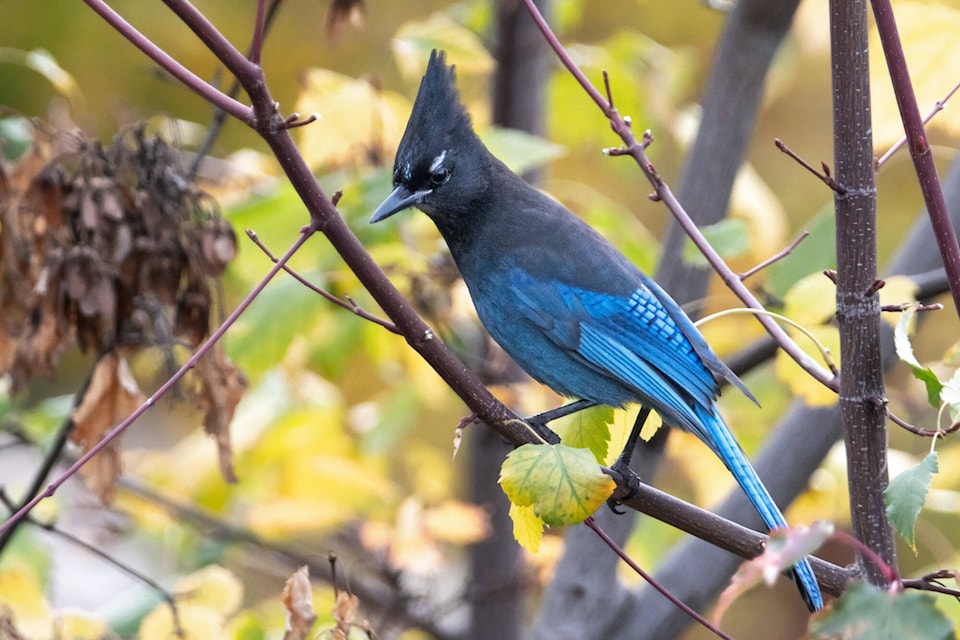As the autumn leaves turn brown and wither with the approach of winter, Steller’s jays are increasingly adding their bright blues and lively sounds to the Shuswap landscape.
Their tropical plumage, urgent calls and fondness for bird feeders, make Steller’s jays one of B.C.’s most recognized and liked birds. In fact, it is B.C.’s provincial bird!
Despite this popularity, many people know the bird, but not its official name. Instead, they often call it a blue jay – a different species with a mostly white face, black eyeline and a bright blue crest. Blue jays are typically found east of the Rocky Mountains all the way across Canada to Newfoundland. The Toronto Blue Jays baseball team sweaters feature the stylized head of a Blue Jay. Our Steller’s jay has a mostly black head and crest and a dark-blue body.
If you have a bird feeder, you probably have Steller’s jays visiting you right now. Looking closely at the heads of these jays, you will notice that most of them have a bold white or silvery streak above the eye. By contrast, Steller’s jays living along the coast typically do not have these white eyebrow-marks.
But don’t be surprised if you see a few of the coastal-plumage birds here as well. You also may see a few jays with only a touch of white above their eyes. The most popular explanation for these plumage variations is that we live in a hybridization zone.
Once separated populations of jays appear to be reconnecting and producing hybrids with a variety of intermediate plumages. The jays with only a bit of white on their heads may be hybrids between the coastal and interior types.
We should also be open to the possibility of seeing a real eastern blue jay in the Shuswap this winter as a few have been seen here or nearby in recent years. Right now, eBird, an online data base of bird observations, is reporting an eastern blue jay in Kelowna complete with a photograph of a Steller’s jay and a blue jay in the same tree!
Now wouldn’t that be a sight to brighten our yards in the late autumn!
Read more: Column: Shuswap winters brighten with the song of black-capped chickadees
